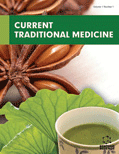Abstract
Aesculus L. is a genus of 12 to 19 woody species, representing one of the most acclaimed examples of inter-continental incoherence of the plants native to temperate regions of the Northern Hemisphere. It is traditionally valued in Ayurveda and the Chinese system of medicine for its various species that possess antitumor, cardioprotective, anti-inflammatory and neuroprotective activities. Current studies on this genus have revealed the presence of specific saponins with a multispectrum of pharmacological actions and therapeutic applications. A repertoire of literature related to the biological, taxonomical, phytochemical and ethnopharmacological aspects of Aesculus genus and its uses in different indigenous populations was explored. An inventory of all the species of this genus that were found to be useful as per ethnopharmacological literature was prepared. The ethnobotany, phytochemistry and pharmacology of the individual species are outlined in this review. The extensive information cited here has adduced the likely areas where the important species of this genus can illustrate significant therapeutic intervention in the management of chronic disorders including diabetes, hypercholesterolemia and cancer. The wide range of its pharmacological actions is attributed to the distinct phytochemicals occurring in the species, especially the triterpenoidal saponins like aescin. This review amplifies the recent studies on phytochemical and pharmacological aspects, which alludes that these species have noteworthy therapeutic potential.
Keywords: Aesculus genus, species, taxonomy, pharmacology, phytochemistry, saponins.
[http://dx.doi.org/10.2307/2804781]
[http://dx.doi.org/10.2307/2805332]
[http://dx.doi.org/10.1016/S0031-9422(00)85739-8]
[http://dx.doi.org/10.1007/978-0-387-70638-2]
[http://dx.doi.org/10.1248/cpb.47.1515] [PMID: 10605051]
[http://dx.doi.org/10.1021/np990180u] [PMID: 10579862]
[http://dx.doi.org/10.1016/j.phytochem.2006.01.017] [PMID: 16497343]
[http://dx.doi.org/10.1016/j.freeradbiomed.2016.09.002] [PMID: 27596954]
[http://dx.doi.org/10.1016/S0960-894X(97)00275-8]
[http://dx.doi.org/10.1158/1535-7163.MCT-05-0495] [PMID: 16818504]
[http://dx.doi.org/10.1016/j.intimp.2015.08.041] [PMID: 26391063]
[http://dx.doi.org/10.1016/j.phytochem.2013.02.003] [PMID: 23489576]
[http://dx.doi.org/10.1046/j.1095-8339.2003.t01-1-00158.x]
[http://dx.doi.org/10.1111/j.1095-8339.2009.00996.x]
[http://dx.doi.org/10.1002/fedr.19911020711]
[http://dx.doi.org/10.1002/j.1537-2197.1996.tb12769.x]
[http://dx.doi.org/10.2307/4115644]
[http://dx.doi.org/10.1016/j.ympev.2009.01.012] [PMID: 19405193]
[http://dx.doi.org/10.1111/j.1095-8339.1989.tb01717.x]
[http://dx.doi.org/10.2307/1223768]
[http://dx.doi.org/10.2307/2411231] [PMID: 28565208]
[http://dx.doi.org/10.1016/j.phytochem.2011.11.012] [PMID: 22178115]
[http://dx.doi.org/ 10.1080/11263504.2021.1918783]
[http://dx.doi.org/10.1093/aob/mcw261] [PMID: 28065925]
[http://dx.doi.org/10.1016/j.jpba.2006.02.031] [PMID: 16621416]
[http://dx.doi.org/10.1002/tax.581012]
[http://dx.doi.org/10.1007/s12686-017-0818-x]
[http://dx.doi.org/10.1086/533605]
[http://dx.doi.org/10.1639/0007-2745(2002)105[0043:TDCAHC]2.0.CO;2]
[http://dx.doi.org/10.1139/cjb-2019-0018]
[http://dx.doi.org/10.1007/s10600-011-9861-0]
[http://dx.doi.org/10.1086/320783]
[http://dx.doi.org/10.1093/treephys/tpz041] [PMID: 30989235]
[http://dx.doi.org/10.1007/978-3-662-30369-6_1]
[http://dx.doi.org/10.1006/phrs.2001.0847] [PMID: 11529685]
[http://dx.doi.org/10.1001/archderm.134.11.1356] [PMID: 9828868]
[http://dx.doi.org/10.1292/jvms.69.709] [PMID: 17675801]
[http://dx.doi.org/10.1016/j.foodres.2010.10.052]
[http://dx.doi.org/10.1007/s11694-016-9307-2]
[http://dx.doi.org/10.1007/BF02858839]
[http://dx.doi.org/10.1046/j.1467-2494.1999.234192.x] [PMID: 18503457]
[http://dx.doi.org/10.1080/10408390600698197] [PMID: 17453922]
[http://dx.doi.org/10.4172/pharmaceutical-sciences.1000411]
[http://dx.doi.org/10.3390/molecules25010117] [PMID: 31892278]
[http://dx.doi.org/10.1016/j.jcis.2018.10.024] [PMID: 30359887]
[http://dx.doi.org/10.1021/np50046a015] [PMID: 3783160]
[http://dx.doi.org/10.1016/S0040-4020(01)82263-8]
[PMID: 25745765]
[http://dx.doi.org/10.1016/S0014-827X(99)00090-7] [PMID: 10668171]
[http://dx.doi.org/10.1248/yakushi1947.119.1_81] [PMID: 9922711]
[http://dx.doi.org/10.1007/s13361-019-02310-7] [PMID: 31452089]
[http://dx.doi.org/10.1016/j.indcrop.2016.03.034]
[http://dx.doi.org/10.3390/molecules20022176] [PMID: 25635381]
[http://dx.doi.org/10.3390/molecules190914625] [PMID: 25225723]
[http://dx.doi.org/10.1248/cpb.35.4717]
[http://dx.doi.org/10.1002/(SICI)1522-2675(19981007)81:10<1815:AID-HLCA1815>3.0.CO;2-R]
[http://dx.doi.org/10.1007/BF02492802]
[http://dx.doi.org/10.1089/jmf.1999.2.45] [PMID: 19281348]
[PMID: 22186328]
[http://dx.doi.org/10.1055/s-2007-969203] [PMID: 17345358]
[http://dx.doi.org/10.1021/np50053a001]
[http://dx.doi.org/10.1186/s12858-018-0095-7] [PMID: 29940844]
[http://dx.doi.org/10.1055/s-2007-969746] [PMID: 17340338]
[http://dx.doi.org/10.3136/nskkk.51.672]
[http://dx.doi.org/10.1021/jf800340s] [PMID: 18512932]
[http://dx.doi.org/10.1248/yakushi1881.57.6_618]
[http://dx.doi.org/10.1271/nogeikagaku1924.29.950]
[PMID: 9772631]
[http://dx.doi.org/10.1248/cpb.49.626] [PMID: 11383619]
[http://dx.doi.org/10.1080/1028602031000081990] [PMID: 12931852]
[http://dx.doi.org/10.1248/cpb.52.1246] [PMID: 15467246]
[http://dx.doi.org/10.1021/np030470h] [PMID: 15104496]
[http://dx.doi.org/10.1248/cpb.53.1310] [PMID: 16204989]
[http://dx.doi.org/10.1002/hlca.200890186]
[http://dx.doi.org/10.1016/S0960-894X(02)00019-7] [PMID: 11859008]
[http://dx.doi.org/10.1016/j.phytochem.2007.05.020] [PMID: 17599369]
[http://dx.doi.org/10.1021/np070295v] [PMID: 17914881]
[PMID: 10086755]
[http://dx.doi.org/10.1016/S0014-2999(96)00645-0] [PMID: 8960888]
[http://dx.doi.org/10.1016/S0031-6989(78)80072-1] [PMID: 652841]
[http://dx.doi.org/10.1002/ardp.19953281006] [PMID: 8554461]
[PMID: 8135874]
[PMID: 582766]
[http://dx.doi.org/10.1016/j.bjp.2015.05.009]
[http://dx.doi.org/10.1016/S0049-3848(11)70024-X] [PMID: 21262451]
[http://dx.doi.org/10.1002/14651858.CD003230.pub4] [PMID: 23152216]
[http://dx.doi.org/10.1080/J157v04n02_03] [PMID: 15364642]
[http://dx.doi.org/10.1016/j.vph.2007.04.003] [PMID: 17512261]
[http://dx.doi.org/10.2147/DDDT.S207720] [PMID: 31631970]
[http://dx.doi.org/10.1016/S0024-3205(00)00551-8] [PMID: 10855943]
[http://dx.doi.org/10.1292/jvms.68.487] [PMID: 16757892]
[http://dx.doi.org/10.3389/fphar.2019.00280] [PMID: 30967782]
[http://dx.doi.org/10.3109/13880200903085466] [PMID: 20645808]
[http://dx.doi.org/10.1292/jvms.67.731] [PMID: 16082125]
[http://dx.doi.org/10.1016/j.jep.2010.02.017] [PMID: 20219666]
[http://dx.doi.org/10.1016/j.canlet.2018.02.027] [PMID: 29474858]
[http://dx.doi.org/10.1007/s11094-019-01956-7]
[http://dx.doi.org/10.18632/oncotarget.11784] [PMID: 27589691]
[http://dx.doi.org/10.1021/acs.molpharmaceut.8b00421] [PMID: 30102549]
[http://dx.doi.org/10.1016/j.phymed.2012.11.005] [PMID: 23238299]
[http://dx.doi.org/10.1039/C4RA14324H]
[http://dx.doi.org/ 10.1109/ICBBE.2009.5162378]
[http://dx.doi.org/10.1128/aem.60.5.1646-1651.1994] [PMID: 8017944]
[http://dx.doi.org/10.3390/molecules24224063] [PMID: 31717579]
[http://dx.doi.org/10.3109/15376516.2014.951815] [PMID: 25137224]
[PMID: 25632792]
[http://dx.doi.org/10.1515/jbcpp-2019-0115] [PMID: 32649293]































